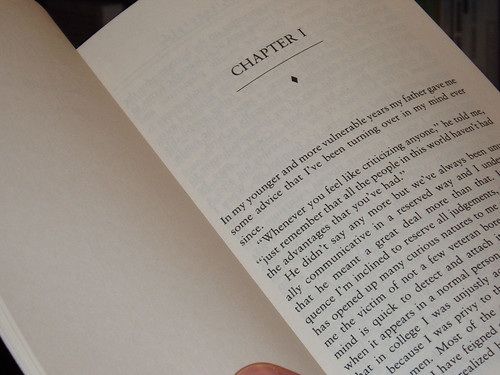“It is our choices that show who we truly are, far more than our abilities.”
– J.K. Rowling
Not every job moves you to embrace hitting your head against the wall. Teaching is a concusive experience.
My students have been exploring science fiction for the last few weeks. From 24 available titles, they researched and selected 6 they wouldn’t mind reading. From there, I worked my teacherly magic to fit them into groups of 4-5.
They set reading schedules, engaged in book talks and wrote discussion reflections to focus their thinking and investigation of a much-maligned though historically significant genre.
After 5 weeks, I was in a familiar spot of moving from group to group trying to convince them they liked their books. Strong was the temptation to label their reading as lazy and surface. It beat the alternative of acknowledging they might just dislike the books.
“If the Reader’s Bill of Rights tells us we can stop reading any time we want, Mr. Chase. Why do we still have to read this book?”
Stupid student choice combined with empowerment.
“Because sometimes people will make you read things you don’t like, and I’ve decided to help you grow a lifelong love of reading by highlighting some of the most regrettable parts of the act,” seemed a poor reply.
Last week, we studied James Gunn’s “A Worldview of Science Fiction.” The kids played cat’s cradle with the ideas so intently that our discussion carried over to this week.
They were starting to see science fiction could include ideas other than those at work in their respective texts.
I was starting to see, again, students’ thinking about what they read grows anemic when they’re forced to read something they don’t like.
In Thursday’s class, I opened by having the students learn all they could about Battlestar Galactica. We collected notes, I fielded questions, and I queued up episode 1 of season 1 “33.”
At the opening credits, I paused and answered questions about details of the cold opening.
When the show hit the tail end of the unusually slow download and the class let out a collective, “No!” I knew I had them.
Today, we welcomed the former head of PR for the SyFy Channel who now works at SLA’s partner organization The Franklin Institute. A lifelong reader of science fiction and English major in college, she talked about what it took to sell science fiction on contemporary television, the creative process behind shows like Battlestar and Farscape and how she made choices as a reader.
The students talked about what they liked about the previous day’s partial episode and what they wanted when they picked up science fiction.
When Andre, who has been railing against his book for two weeks, raised his hand and asked, “How do you come back after reading a bad sci-fi book?” I knew we were making progress.
The progress came when I remembered what I believe to be true:
- Give kids choices.
- Show real-world models.
- Connect them with passionate adults who know what they’re talking about.
Forcing them to read books they didn’t care about that hadn’t been organically recommended and that they didn’t much care for was really more a test of our rapport than their abilities.
Next time I decided to run repeatedly into walls, I’l try to see the dents I’ve left this time and take them as reminders.


